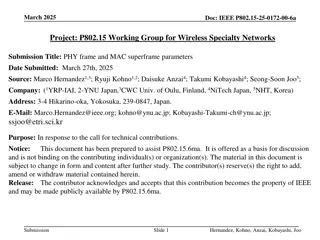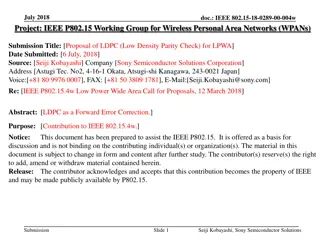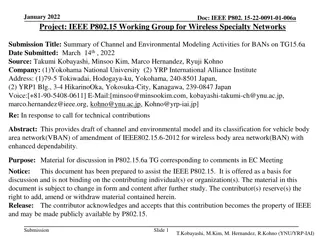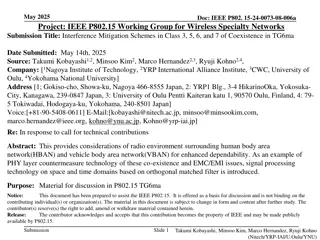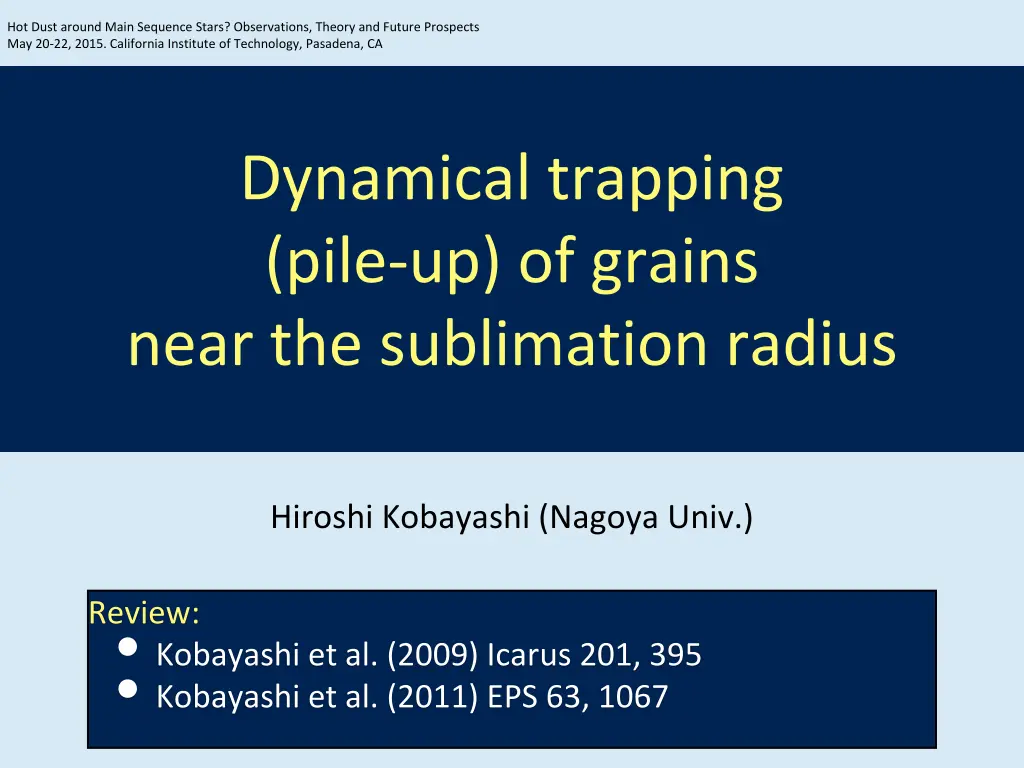
Insights into Hot Dust Dynamics Around Main Sequence Stars
Explore the phenomenon of hot dust around main sequence stars through observations and theoretical frameworks, with a focus on dynamical trapping of grains near the sublimation radius. Learn about the sublimation temperatures, orbital evolution stages, and the effects of stellar luminosity on sublimation pile-up. Discover the intricate relationships between temperature, distance, and pile-up enhancement factors in this fascinating astronomical study.
Download Presentation

Please find below an Image/Link to download the presentation.
The content on the website is provided AS IS for your information and personal use only. It may not be sold, licensed, or shared on other websites without obtaining consent from the author. If you encounter any issues during the download, it is possible that the publisher has removed the file from their server.
You are allowed to download the files provided on this website for personal or commercial use, subject to the condition that they are used lawfully. All files are the property of their respective owners.
The content on the website is provided AS IS for your information and personal use only. It may not be sold, licensed, or shared on other websites without obtaining consent from the author.
E N D
Presentation Transcript
Hot Dust around Main Sequence Stars? Observations, Theory and Future Prospects May 20-22, 2015. California Institute of Technology, Pasadena, CA Dynamical trapping (pile-up) of grains near the sublimation radius Hiroshi Kobayashi (Nagoya Univ.) Review: Kobayashi et al. (2009) Icarus 201, 395 Kobayashi et al. (2011) EPS 63, 1067
Hot Debris Disks Interferometric observations found excesses of near infrared emission, which indicate hot disks with T > 1000K (Ciardi et al. 2001; Absil et al. 2006, 2008, 2009; di Folco et al. 2007; Akeson et al. 2009; Defr re et al. 2011, 2012).
Sublimation Temperature H: latent heat : molecular weight (Kobayashi+11) The sublimation temperatures of silicates are similar to those of hot debris disks.
Orbital Evolution with Sublimation Stage I, a grain spirals in due to P-R drag. Stage II, sublimation downsize the grain, resulting in stalling drift. Balance between P-R drag and increase of radiation pressure. Stage III, the grain is blown out. (Kobayashi+09)
Pile-up Dust grains are produced in a planetesimal belt. Dust drifts inward due to P-R drag. Sublimation piles up grains. The inner cavity is formed via sublimation of silicates for T > 1000- 1500K. Obsidian, Solar ns(r) / ns(rout) (Kobayashi+08,09)
Stellar Luminosity Sublimation pile-up is more effective around luminous stars. Sublimation distance increases with stellar luminosity. Sublimation temperature is independent of stellar types. (Kobayashi+09)
Temperature, Distance, & Pile-up (Kobayashi+11) We could analytically derive sublimation temperature, distance, and enhancement factor.
Orbital Eccentricity (Kobayashi+11) The enhancement factor depends on orbital eccentricity. An outer planetesimal belt results in pile-up, while little pile up for an inner dust source.
SED Vega w/o pile-up, olivine pyroxene The enhancement due to pile-up does not result in significant difference. If we can arbitrarily chose the amount of drifting grains, sublimation cut-off may account for the SED of hot disks. Pyroxene can better explain the SED of Vega. w/ pile-up, olivine observation (Absil+06) Olivine: 1300K Pyroxene: 1700K (Kobayashi+11)
Amount of drifting grains Sublimation is effective only when sufficient dust grains drift into the sublimation zone. For Vega, ~ 4 x 10-4 with pyroxene. However, the amount of grains are limited by collisions: tcol ~1/ ~ tPR (Wyatt 05). For Vega, ~ 3 x 10-4 if dust source is located at ~0.5AU. Collisional and orbital evolution with drag is necessary to determine accurately.
Summary Refractory dust grains drift inward by P-R drag. They sublime in the vicinity of host stars. Sublimation stalls P-R drift and piles up dust grains. Dust grains are eventually blown out. Debris disks have cavities in the sublimation zone. The cavity is important for SED but the pile-up is not. We need mass and spatial evolution of grains including collisions, P-R drag, & sublimation.

